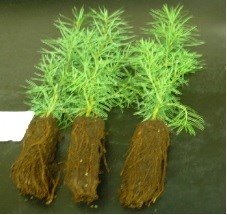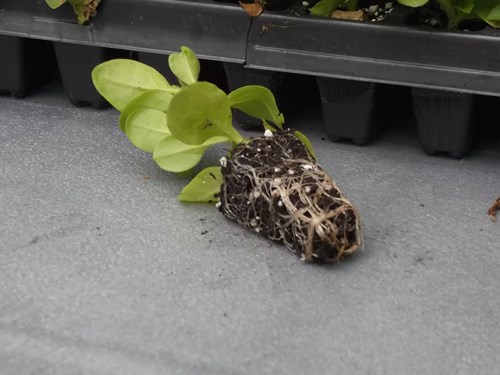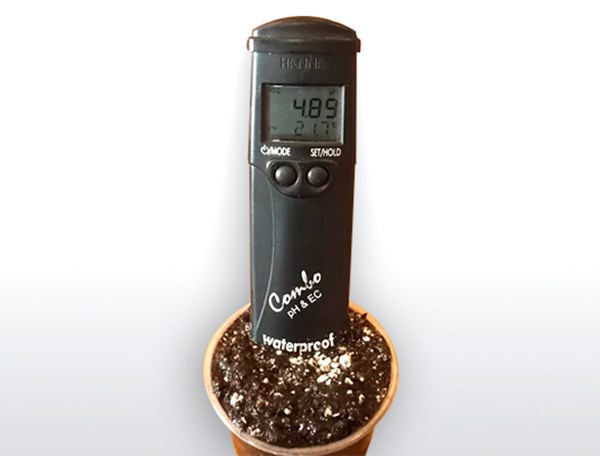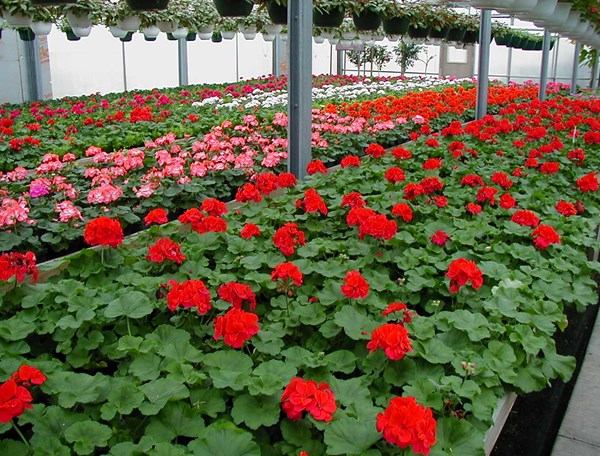Training Center
Tips on Producing Excellent Rooted Liners
Thursday, September 7, 2023 | Susan Parent
Production of high–quality liners has long been the basis of success in the woody ornamental nursery and forestry plant industry. For production of young plants in greenhouses, some plants are started by seed and many are propagated by cuttings, grafting, plant division and tissue culture. Whatever method is used depends on the plant species as well as grower’s facilities. The basics of producing liners with an excellent root system are similar whether you’re starting woody ornamentals, perennials, flowering annuals or vegetative cuttings in the greenhouse.
The rooting medium used for rooting liners plays an important role in producing a good root system and must also be suitable for the growing environment. It must have an appropriate pH, sufficient nutrient levels, good drainage and water retention. It’s important that the rooting medium is stable and that it does heat up and burn the newly rooted cuttings. Biological additives also play an important role in rooting cuttings. Here are a few tips to consider for growing rooted liners.
Sanitation
Never reuse rooting media. If containers or pots are to be reused, always sterilize them with a disinfectant and be sure they are washed thoroughly and rinsed with water before using them. Keep the propagation area weed-free and remove all plant debris and cuttings that failed to root from propagation beds. Weeds can be a source of insects and rotting plant debris can introduce diseases.
Rooting media
Choose a rooting medium most appropriate for the plant species to be propagated. Consider the physical properties as well the pH and EC as they can impact rooting. Be sure the material is not too fine (fines reduce air porosity and drainage) or has too many large components, which can dry out too quickly and can inhibit rooting. Do not compact the rooting medium when filling rooting containers nor stack filled containers one on top of each other as this also compacts the rooting medium. Compacted rooting medium has slower drainage and far less aeration. Cuttings not only need moisture, but also the presence oxygen is needed for proper rooting.
PRO-MIX® offers a line of products that are designed for rooting liners. These include PRO-MIX® HP, which provides good aeration and fast dry-down, PRO-MIX® BX, which has higher water retention. PRO-MIX® products can include MYCORRHIZAE™, an endomycorrhizal fungus which helps improve root development and assists in water and nutrient uptake. Once the liners are transplanted, MYCORRHIZAE™ will help plants adjust to their new growing environment and aid in building a strong root system. Also many PRO-MIX® products can include BIOFUNGICIDE™*, which is a natural bacterium that suppresses pathogens that cause root rotting diseases. Some products, such as PRO-MIX® HP BIOFUNGICIDE™*+MYCORRHIZAE™ contain both.
*All BIOFUNGICIDE™ products are available under BIOSTIMULANT in Canada and in Latin America.
Containers
Be sure the containers or trays used are deep enough and adapted to the species propagated. Deeper cells promote better drainage which often encourages better rooting. Most plants need deeper cells as roots like to grow down into the depths of the rooting medium. There are trays and pots designed for this characteristic.

These are rooted Douglas fir seedlings after 1 season’s growth. Notice the depth of the growing medium. Roots are well developed all around the rooting medium in the container as a result of good water management. Source: Premier Tech.
Preparation of the cutting
Remove flower buds and terminal growing tips as this increases side shoot development, minimizes premature flowering and allows the cuttings energy to be directed to root formation. A common procedure used when rooting cuttings with large leaves is to trim the leaves. Large leaves transpire a lot of water, causing the cutting to dry out and they block mist from reaching the rooting medium which promotes uneven drying from one cell to the next. Often lower leaves die during propagation and accumulate on the rooting medium surface. When these leaves decompose, they can also attract certain diseases and insects that may harm or kill liners.
Plant Growth Hormones
Not all unrooted cuttings need rooting hormones. The need depends on the rate at which they root. If it takes less than 10 days to root, rooting hormone may not be required. Those that take longer would benefit from rooting hormone.
Temperature
To improve success with rooting of cuttings, it is best to maintain rooting media temperatures between 68-77°F (20-25°C); even cold tolerant crops such as dianthus, osteospermum, petunia, etc. prefer this temperature for rooting. Warm rooting medium temperatures accelerate cell division which leads to faster callusing, root initial development and subsequent root growth. It also speeds up the dry-down rate of the rooting medium, which also helps encourage better rooting. The best way to warm the rooting medium is through bottom heat.
Air temperature is not as important for rooting, but it is suggested that it should be set between 65-75°F (18-24°C). Air temperature becomes important when new shoot growth begins as warmer temperatures encourage faster top growth.
Once roots have grown to the bottom of the plug, rooting medium temperatures can be reduced or plants can be taken off bottom heat systems. This will aid in the hardening process to help the plant get use to cold shipping and growing temperatures.
Water management
When placing cuttings under mist, moisture management is critical for excellent rooting. It’s important to monitor the rooting medium under mist because it will dry from the bottom up. If there is too much moisture in the rooting medium, this will promote rotting so it’s best to hand water those plants that seem to dry out faster to encourage even drying of one cell to the next. Uneven drying often produces inconsistent rooting. Also check the mist nozzles or mist heads on booms; be sure they are cleaned and none are clogged as this can cause uneven liner growth.
Once the liners are removed from mist, acclimate the plants to reduced watering frequency and drier environments. Water thoroughly at each watering and allow the rooting medium surface to dry out between irrigations so roots grow down deeper into the rooting medium. Shallow watering or overwatering produces an anaemic root system that stays on the rooting medium surface and does not fill out the lower sections of the root ball. Also the roots will be thin, ‘wimpy’ and few.

Notice root development on this petunia cutting. A good rooting medium along with proper watering produces great roots all the way to the bottom of the plug. Source: Premier Tech.
Fertilization
Determining if fertilizer should be applied to unrooted cuttings depends on the nutritional status of the stock plants from which the cuttings were taken. If the stock plants were nutrient deficient, then the unrooted cuttings will quickly decline in nutrient levels before rooting. Continuous misting / fogging leaches the rooting medium of any starter fertilizer that is provided by the manufacturer. If cuttings from certain plants are prone to deficiencies or arrive with nutrient deficiencies, apply a 50-100 ppm N solution once after sticking.
When cuttings begin to callus, apply another 50-100 ppm N drench and also again at 100-200 ppm N once roots emerge from the callus tissue. To tell if roots have emerged, lightly pull the cutting to check on root development. When roots grow to the bottom of the plug, constant feed them at 100-200 ppm N. This rate should be maintained until the liners are transplanted. Avoid higher application rates as this may encourage too much top growth and limit root growth.
Remember any fertilizer application rates above are guidelines and should be tested on a small percentage of plants to verify it will work for you. Lower rates are for light feeders (Bracteantha, New Guinea Impatiens, etc.) and higher rates for heavy feeders (petunia, calibrachoa). Fertilizer helps improve the health of liners and simultaneously encourages active root growth.
References:
- BC Ministry of Agriculture, Fisheries and Food 1994: Nursery Production Fact Sheet
- Santos, K., P. Fisher and B. Argo. 2009. "Nutrient Supply in Propagation" Greenhouse Product News February 2009: 35-37
For more information on producing excellent roots on liners and PRO-MIX® products that work best for your application, please contact your Grower Services Representative.
 |
 |
 |
 |
|---|---|---|---|
|
Ed Bloodnick |
Nathan Wallace-Springer |
Lance Lawson |
Victor Brantly |
 |
 |
 |
|
|
Troy Buechel |
Susan Parent |
Jose Chen Lopez |
PRO-MIX® is a registered trademark of PREMIER HORTICULTURE Ltd.
Related Articles
-
The primary components of commercial growing media are sphagnum peat moss and composted pine bark, which are naturally acidic with a pH in the 3.5 to 5.0 range.
-
When the issue of nutrient uptake by greenhouse crops is considered, plants can be broken down into three groups.

 Where to find our products
Where to find our products



